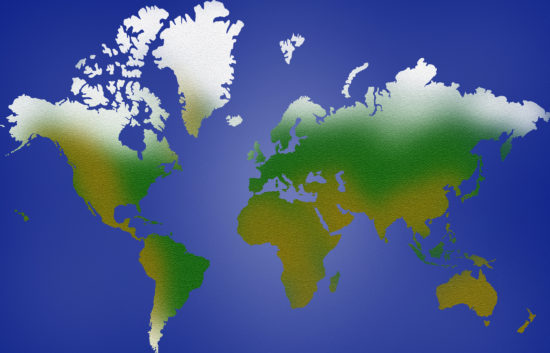While I’ve been trying to curb my news junkie tendencies, the staggering variety of train wrecks and car crashes to read about these days threatens to overwhelm one. What I find so interesting (well, I find a million different things interesting but for the purposes of this missive we’ll narrow that down) is that the nature of the catastrophes domestically differs somewhat in make-up from those that are occurring in other countries (or at least what’s getting coverage). And, of course, that leads me to thinking about finances domestically and internationally (penalty points to all of you rolling your eyes right now). I’m sure you’ve all heard the old gardening quip: A daffodil is a narcissus but not all narcissus are daffodils. I think that quip has some value in the investing world when we think of global investing versus international investing.
Stepping back, let’s do some definitions: for our purposes, “global” means the whole globe, all 195+ countries including the US (or “domestic” markets) whereas “international” means the whole globe except the US. Generally, a company is classified where the company is headquartered so while it may be a global company, if its headquarters is in the US then it is a “domestic” company whereas a global company with its headquarters in Ireland is an “international” company.
Now, I know what you’re saying – why bother with investing internationally when I can just buy a global fund. Yes, that would seem logical but I think we’ve established that logic doesn’t always function properly when it comes to investing (or elections, pandemics, congressional aid, etc…). A quick survey of a half dozen “global” funds shows that all of them invest over half of their positions in domestic markets which means you aren’t really getting all that much international exposure, particularly if that one global fund only represents a portion of your investment allocation. If we are looking at target date and/or asset allocation fund (those all-in-one/one-stop-shop funds), that percentage drops to about 20% or even lower.
“Ahh,” you say, “but if I invest in a large cap domestic fund don’t I get global exposure through all those big global companies” to which I say “ahh, nice try grasshopper…” The great thing about international funds is that they invest in all sorts of companies that are doing all sorts of things that those big companies aren’t. Think of it this way – that big US company with its fingers in a dozen or more countries is like a big ole battleship. That ship isn’t going to change quickly or turn on a dime. What you are missing out on are all those little boats swooping around/in front of/loop-de-looping that big ship and that’s the exposure we want. Because of the different nature of their markets, we often see stronger dividends from those international companies (remember our conversation about the insulation dividends provide awhile back) and those other governments are doing different things to help support their economies that often mean more stable share pricing. Heap on top a dollop of completely different ways of reacting to the current pandemic and you are seeing some other countries rebound in ways our domestic markets can only fantasize about. For example, the Eurozone economy dropped way less last quarter than the US (-12.1% vs -33%) and is on track for a positive growth for the 3rd quarter whereas we probably won’t see true positive numbers for a while yet.
Now, I’m not in any way endorsing a wholesale flip to putting all of your dollars into international holdings. I’m merely saying that everything has its place in your portfolio, for one reason or another. If, after looking at your portfolio, you’re thinking of adding more international exposure, we can certainly have a conversation about your options. If you aren’t totally convinced that something international belongs in your portfolio, check out the news item about the laptop thieving boar in Germany – interesting stuff happens all over the globe and only a well -diversified portfolio has the chance to take advantage of it.

